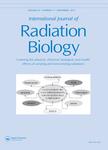版权所有:内蒙古大学图书馆 技术提供:维普资讯• 智图
内蒙古自治区呼和浩特市赛罕区大学西街235号 邮编: 010021

作者机构:Armed Forces Radiobiol Res Inst Dept Radiat Med Bethesda MD 20889 USA
出 版 物:《INTERNATIONAL JOURNAL OF RADIATION BIOLOGY》 (国际辐射生物学杂志)
年 卷 期:2000年第76卷第2期
页 面:261-271页
核心收录:
学科分类:0710[理学-生物学] 07[理学] 09[农学] 0827[工学-核科学与技术] 1009[医学-特种医学]
主 题:血细胞计数 骨髓细胞/药物作用 骨髓细胞/辐射效应 γ射线 免疫 天然/药物作用 免疫 天然/辐射效应 克雷伯菌感染/免疫学 克雷伯菌感染/死亡率 克雷伯菌 肺炎 有机硫磷化合物/药理学 辐射防护剂/药理学 相对生物学效应 动物 女(雌)性 小鼠
摘 要:Purpose: To determine the efficacy of WR-151327 (WR) [S-3-(3-methylaminopropylamino) propylphosphorothioic acid;(CH3-HN-(CH2)(3)-NH-(CH2)(3)-S-PO3H2)] in increasing resistance to bacterial infection after a sublethal dose of gamma-photons or mired-field neutrons plus gamma-photons. Materials and methods: B6D2F1/J female mice received 200 mg/kg WR i.p. or saline vehicle 20-30 min before or after sham (0 Gy) ol 7.0 Gy Co-60 gamma-photon irradiation. WR or saline vehicle was given only before 3.5 Gy TRIGA-reactor-produced mixed-field [n/(n + gamma) = 0.67] irradiation. Four days after drug treatment or drug treatment and irradiation, graded doses of Klebsiella pneumoniae were injected s.c. into mice, and 30-day survival was recorded. To assess haemopoietic changes other unirradiated and irradiated mice not injected with bacteria were given WR or saline. Peripheral blood (PB) and femoral bone marrow (BM) cells were measured 1, 3 or 1, 7, 10 and 14 or 15 days later. Results: WR pretreatment increased resistance to infection in irradiated but nor in unirradiated mice. Bacterial CFU-LD50/30 values for 0 Gy saline-treated mice were 1.20 x 10(6);for 0 Gy WR-treated mice 1.16 x 10(6);for gamma-photon-irradiated saline-treated mice 3.02 x 10(1) for gamma-photon-irradiated WR-treated mice 1.24 x 10(4);for mixed-field-irradiated saline-treated mice 1.94 x 10(2);and for mixed-field-irradiated WR-treated mice 6.13 x 10(3). WR-induced resistance to infection parallaled increased numbers of PB white cells, neutrophils, platelets, femoral BM cells and granulocyte macrophage colony-forming cells (GM-CFC) in irradiated mice not given bacteria. Conclusions: These studies quantify the resistance to bacterial infection in mice treated with WR before sublethal irradiation. The findings suggest that WR treatment increases resistance to infection in immunocompromised hosts.